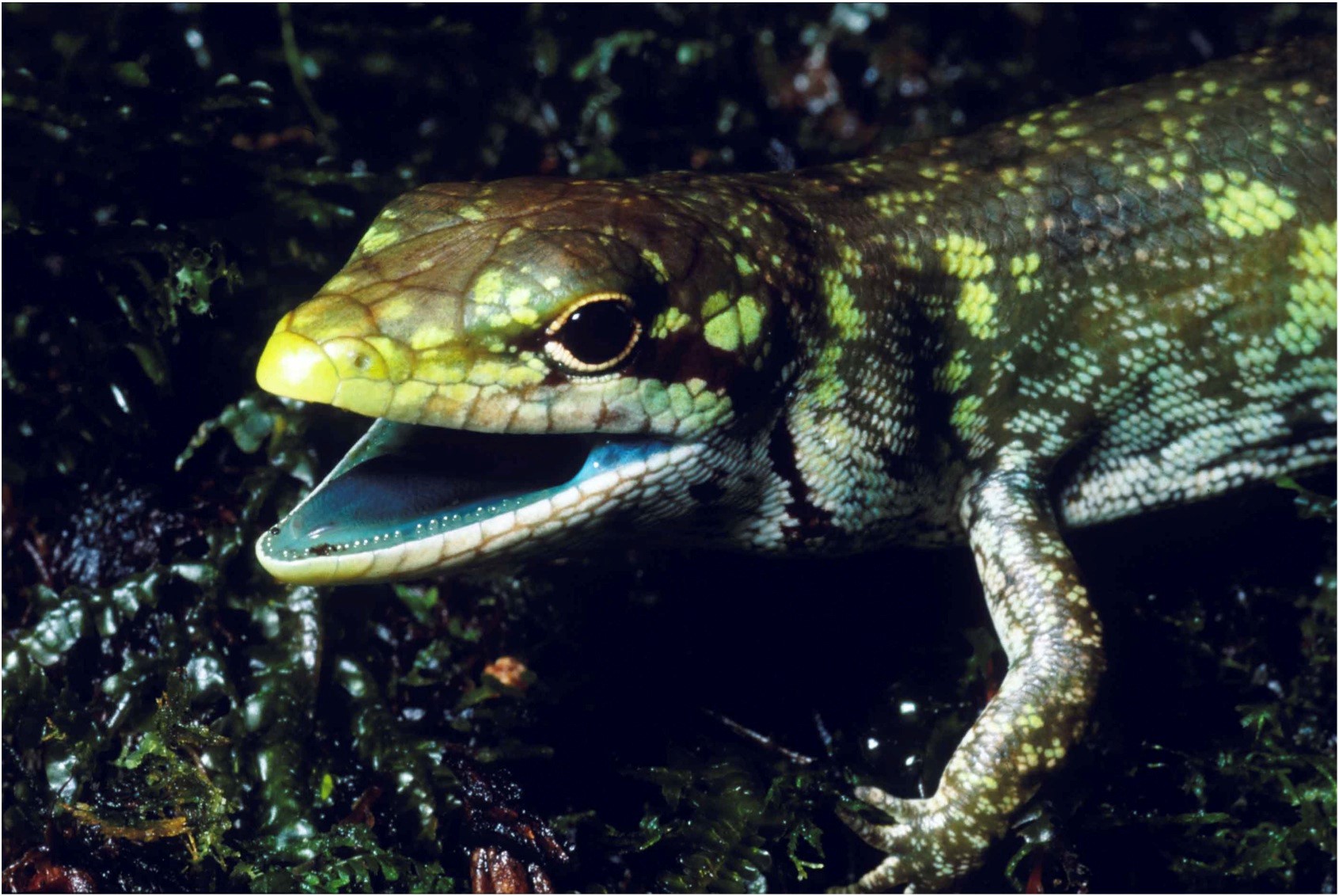
From Louisiana State U:
Green blood is one of the most unusual characteristics in the animal kingdom, but it’s the hallmark of a group of lizards in New Guinea. Prasinohaema are green-blooded skinks, or a type of lizard. The muscles, bones and tongues of these lizards appear bright, lime-green due to high levels of biliverdin, or a green bile pigment, which is toxic and causes jaundice. Surprisingly, these lizards remain healthy with levels of green bile that are 40 times higher than the lethal concentration in humans.
Not clear why the lizards’ good health is a surprise here. They aren’t humans; they are not even mammals. But hey, picky picky. 😉
Green blood likely emerged independently in various lizards, which suggests that green blood may have an adaptive value. Slightly elevated levels of bile pigments in other animals, including insects, fish and frogs, have played potentially positive roles in these animals. Previous studies have shown that bile pigment can act as an antioxidant scavenging free radicals as well as preventing disease during in vitro fertilization. However, the function of green bile pigment in these lizards is still uncertain.More.
The fact that green blood may have adaptive value doesn’t explain how it managed to arise independently four times by the mechanism of natural selection acting on random mutation (Darwinism) unless the probability calculations can be shown to work. But who really does that math? Only Darwinism skeptics.
For example, an extra set of teeth might be adaptive to humans if they came in at around forty years of age. But what are our chances of getting the extra set via natural selection acting on random mutations?
Convergence is best seen as an argument for dusting off structuralism.
See also: Biophysics is starting to matter in evolution. Much that happens to embryos is not usefully seen as natural selection acting on random genetic mutation but as applied physics and chemistry. Yes, we are talking about structuralism, the much-maligned approach to evolution that sees it as critically dependent on physics and chemistry, not accidentally so (as in random evolution).
Why a four-eyed fossil lizard is a problem for Darwinism
and
Evolution appears to converge on goals—but in Darwinian terms, is that possible?
and